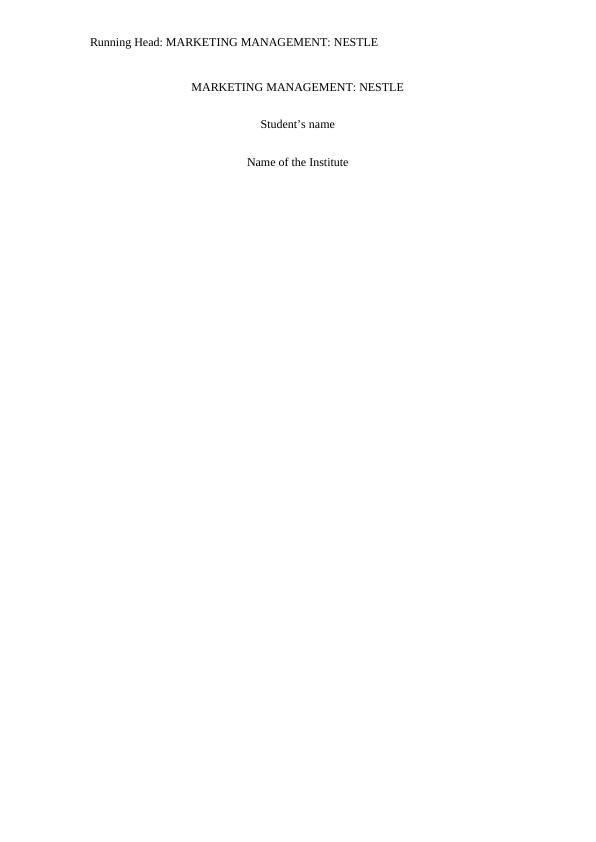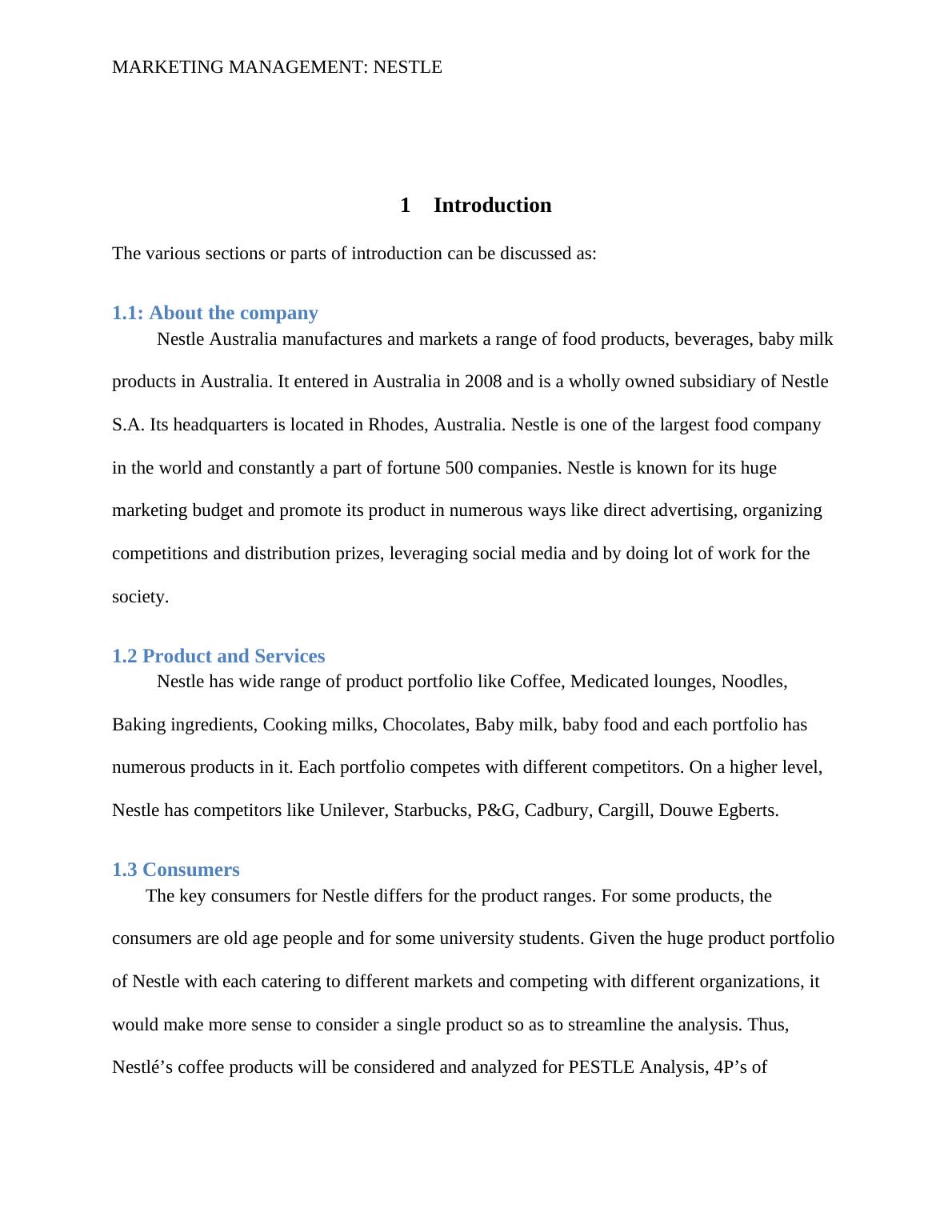MKT501 - Marketing Management of Nestle
14 Pages3207 Words85 Views
Charles Sturt University
Marketing Management (MKT501)
Added on 2020-03-01
About This Document
Nestle Australia manufactures and markets a range of food products, beverages, and baby milk products in Australia. This paper will discuss the marketing audit for Nestle. This paper will discuss the external and internal environment of Nestle Nescafé. This paper includes analyses such as - industry analysis and market trends for Nestle, PESTLE, competition and segmentation analysis. As well as it will cover the level of involvement and decision-making and a perceptual map for the marketplace.
MKT501 - Marketing Management of Nestle
Charles Sturt University
Marketing Management (MKT501)
Added on 2020-03-01
ShareRelated Documents
End of preview
Want to access all the pages? Upload your documents or become a member.
Assignment on Marketing Fundamental
|15
|2926
|103
Analysis of Nestle Company: Pestle Analysis and Porter's Five Forces Model
|11
|2459
|104
Marketing Strategy and Plan of Nestle
|13
|3604
|220
Strategic Marketing Management: Building Effective Strategies and Developing Marketing Plans
|13
|4262
|59
Effective Marketing Strategies of Nestle : Report
|12
|2789
|260
Marketing Mix Assignment (DOC)
|16
|4094
|54




